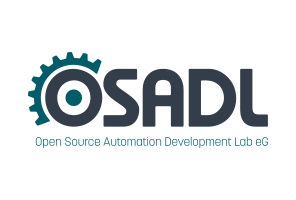Dates and Events:
|
OSADL Articles:
2023-11-12 12:00
Open Source License Obligations Checklists even better nowImport the checklists to other tools, create context diffs and merged lists
2022-07-11 12:00
Call for participation in phase #4 of Open Source OPC UA open62541 support projectLetter of Intent fulfills wish list from recent survey
2022-01-13 12:00
Phase #3 of OSADL project on OPC UA PubSub over TSN successfully completedAnother important milestone on the way to interoperable Open Source real-time Ethernet has been reached
2021-02-09 12:00
Open Source OPC UA PubSub over TSN project phase #3 launchedLetter of Intent with call for participation is now available |
Real Time Linux Workshops
1999 - 2000 - 2001 - 2002 - 2003 - 2004 - 2005 - 2006 - 2007 - 2008 - 2009 - 2010
Eighth Real-Time Linux Workshop on October 12 to 15, 2006, in Lanzhou, Gansu, P.R.China
Embedded Real-Time Linux on Chip:
Next Generation Operating System for Embedded System
Wei Hu, Tianzhou Chen, Bin Xie, and Qingsong Shi College of Computer Science, Zhejiang University
Hangzhou, Zhejiang, 310027, P.R.China
ehuªzju.edu.cn
tzchenªzju.edu.cn
xiebinªzju.edu.cn
zjsqsªzju.edu.cn
Real-time Linux is used in embedded systems because the source of Linux is openly and freely available. But current real-time Linux is often an integrated software platform, including all functions together. They store in flash or hard disks, loaded into RAM on board when the system starts. But it has some disadvantages when it is used for embedded systems. In this paper, we present the embedded real-time Linux on chip, which contraposes these disadvantages to make optimization. Embedded real-time Linux on chip proposes a new architecture for embedded system with SOC based on Linux. The fundamental principles for embedded real-time Linux on chip, which is a module-based architecture, are: the kernel runs in SRAM minimum and the scheduler of modules is optimal. Embedded real-time Linux on chip architecture consists of two main parts: Microkernel on chip and Module Management on flash. Microkernel and all the modules are stored in flash on chip. Microkernel will be loaded into SRAM on chip when the system starts. When a module is needed, the management module is called by module scheduler in microkernel and this module will be loaded into SRAM. Our experimental results show that it makes Linux more efficient for embedded systems and potential for good real-time responses.




